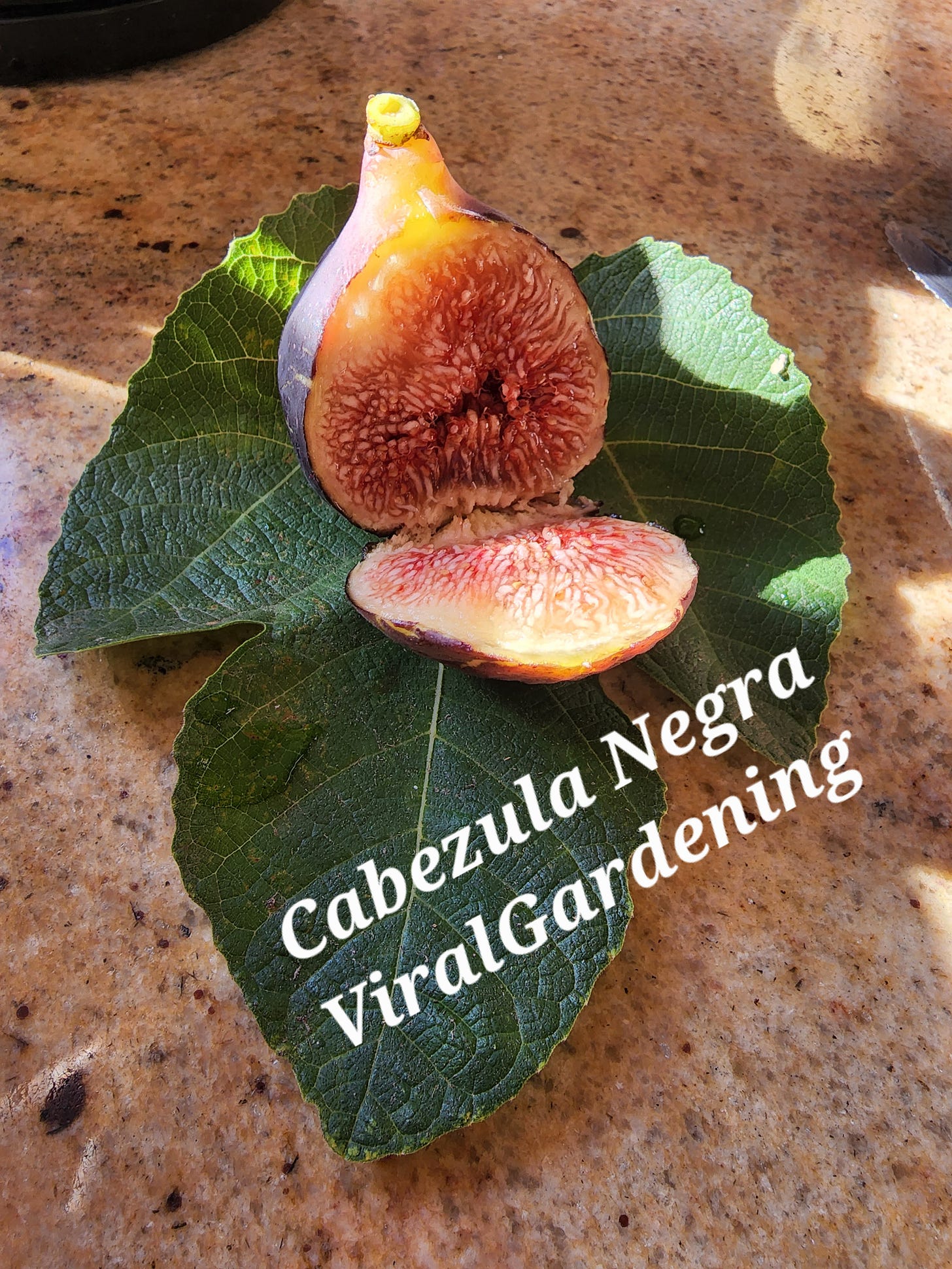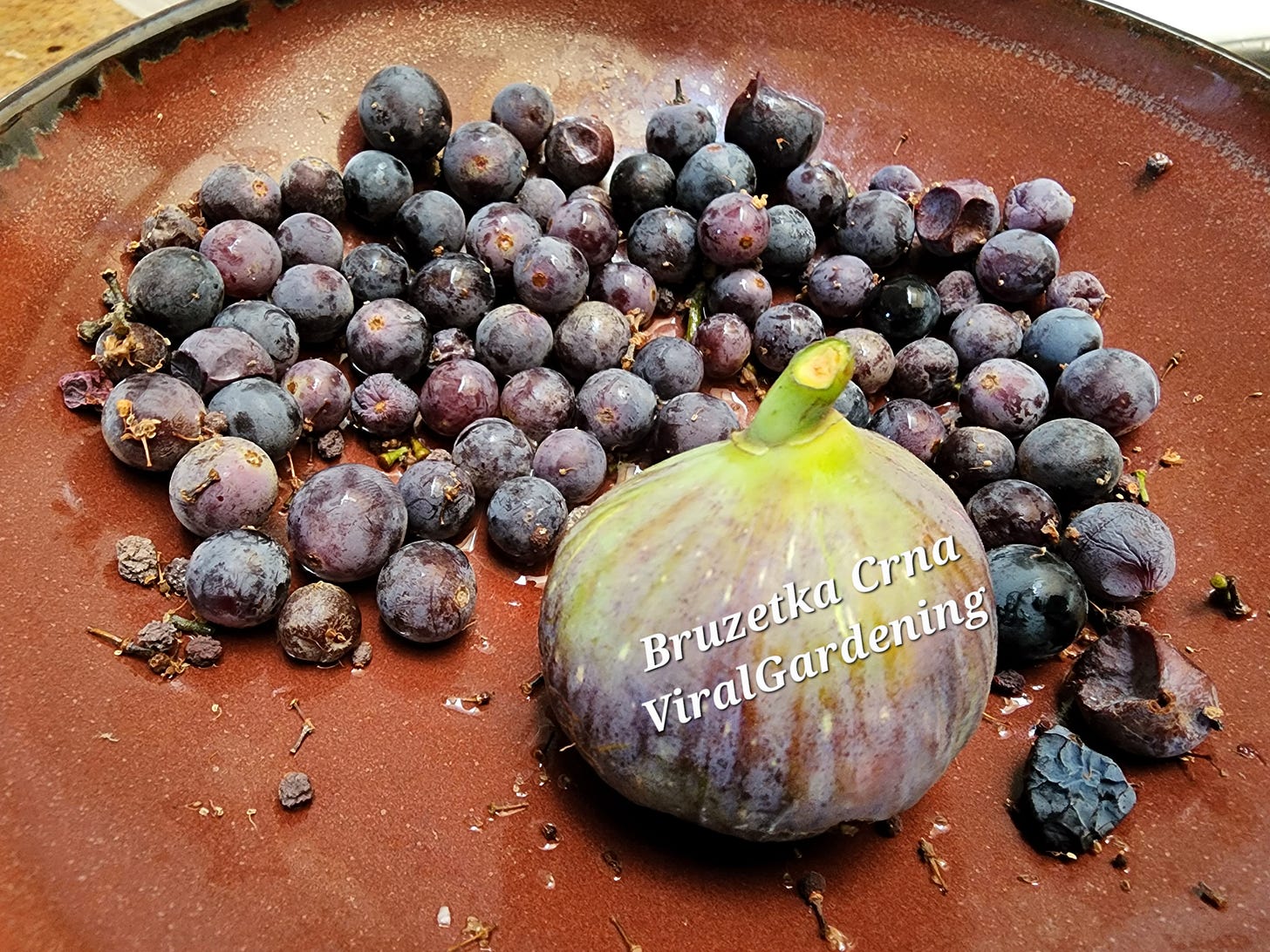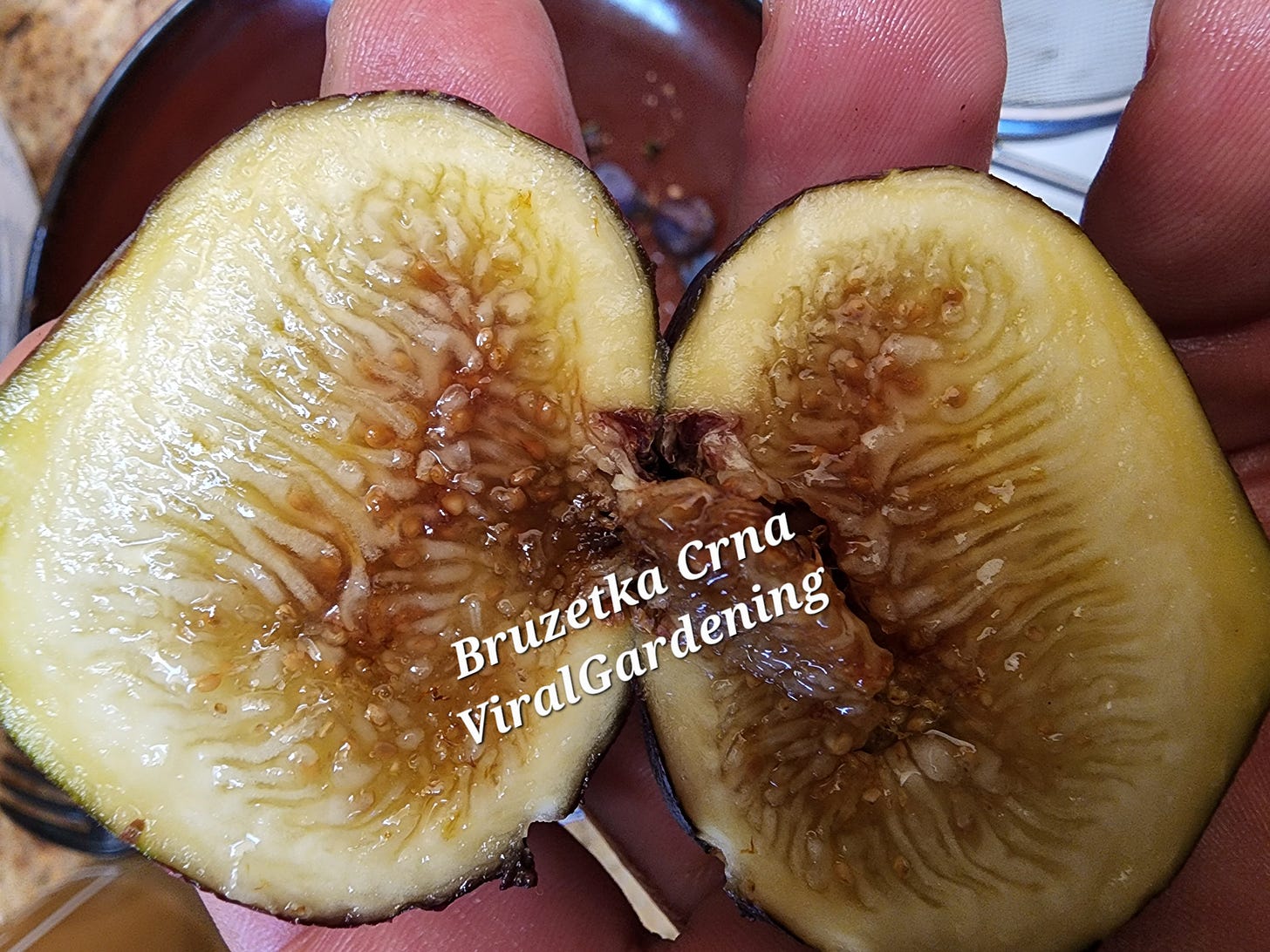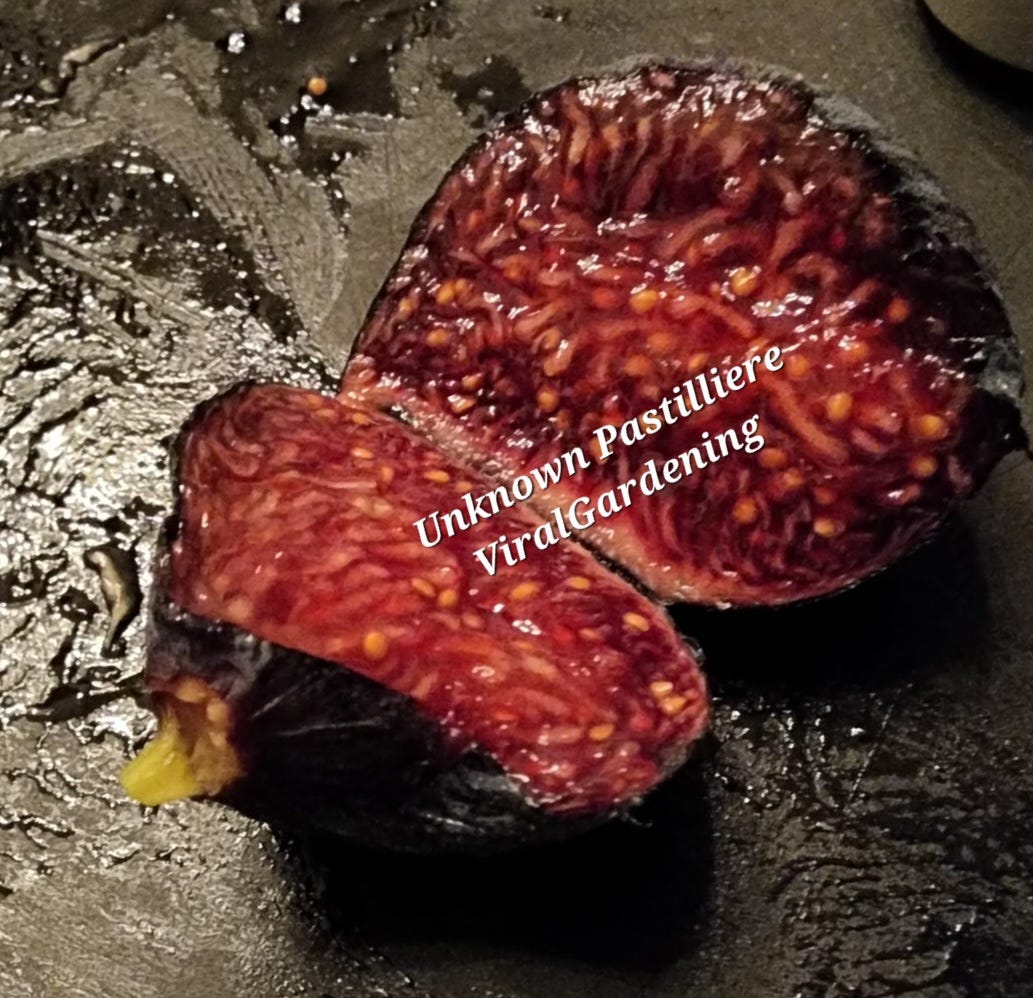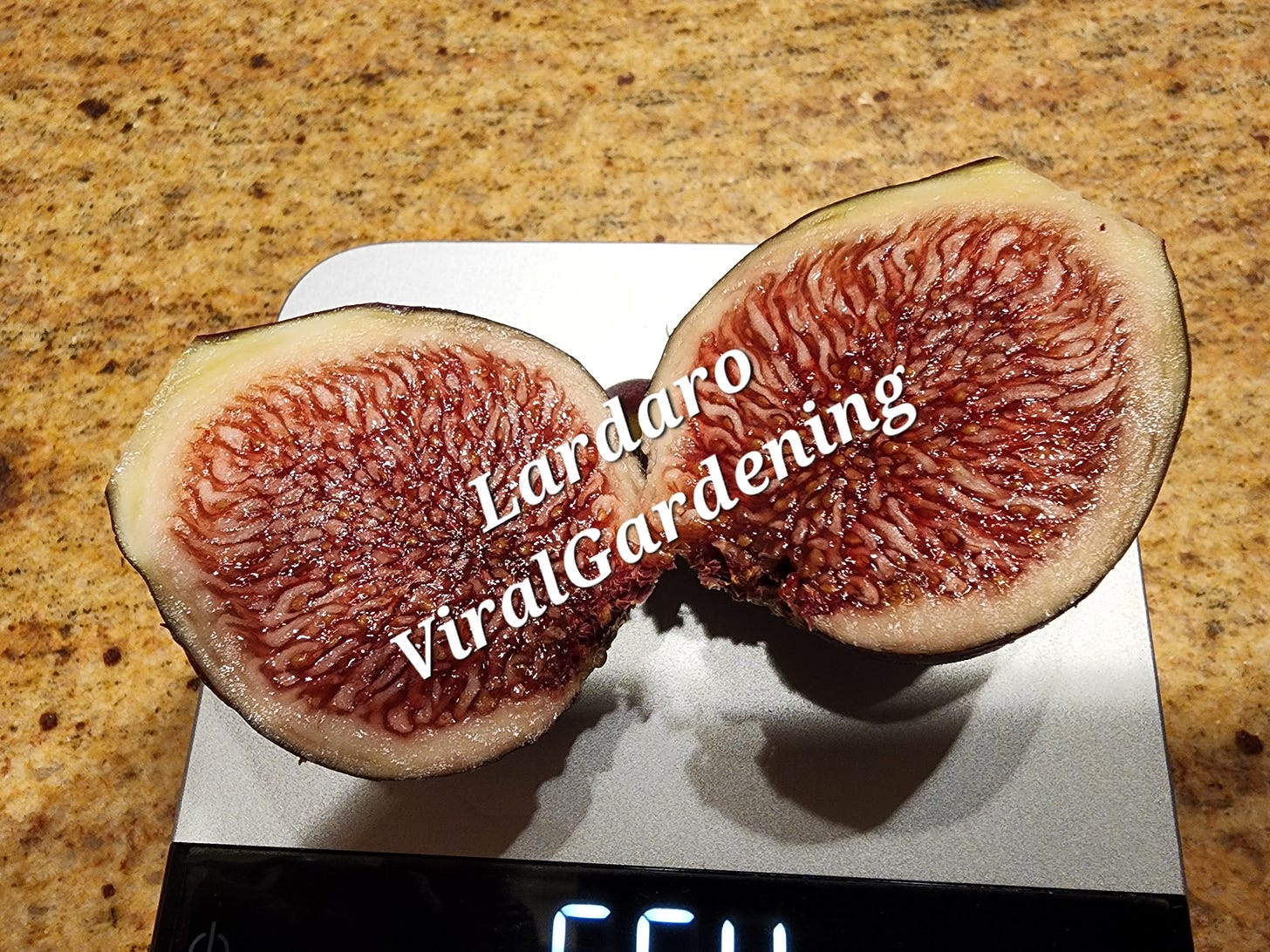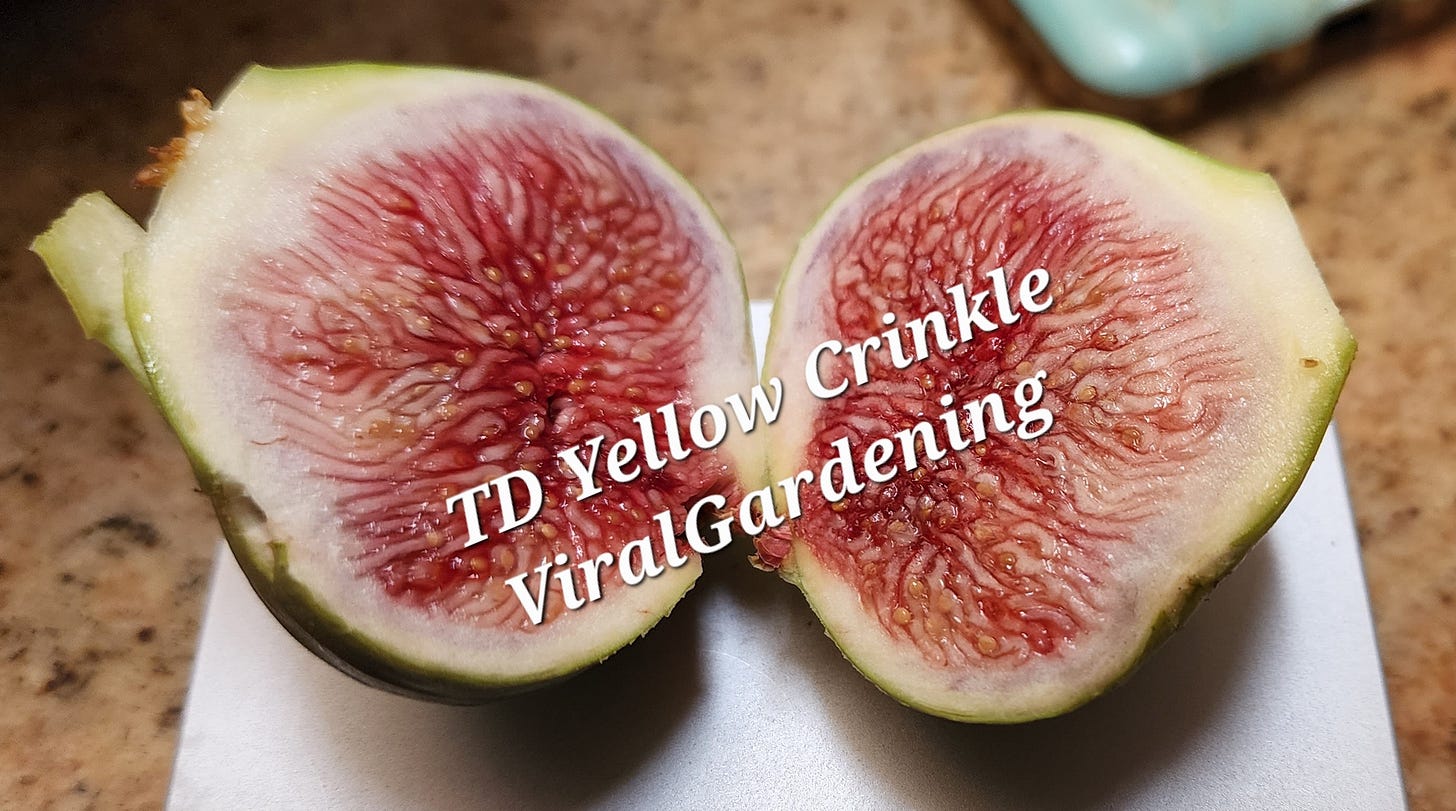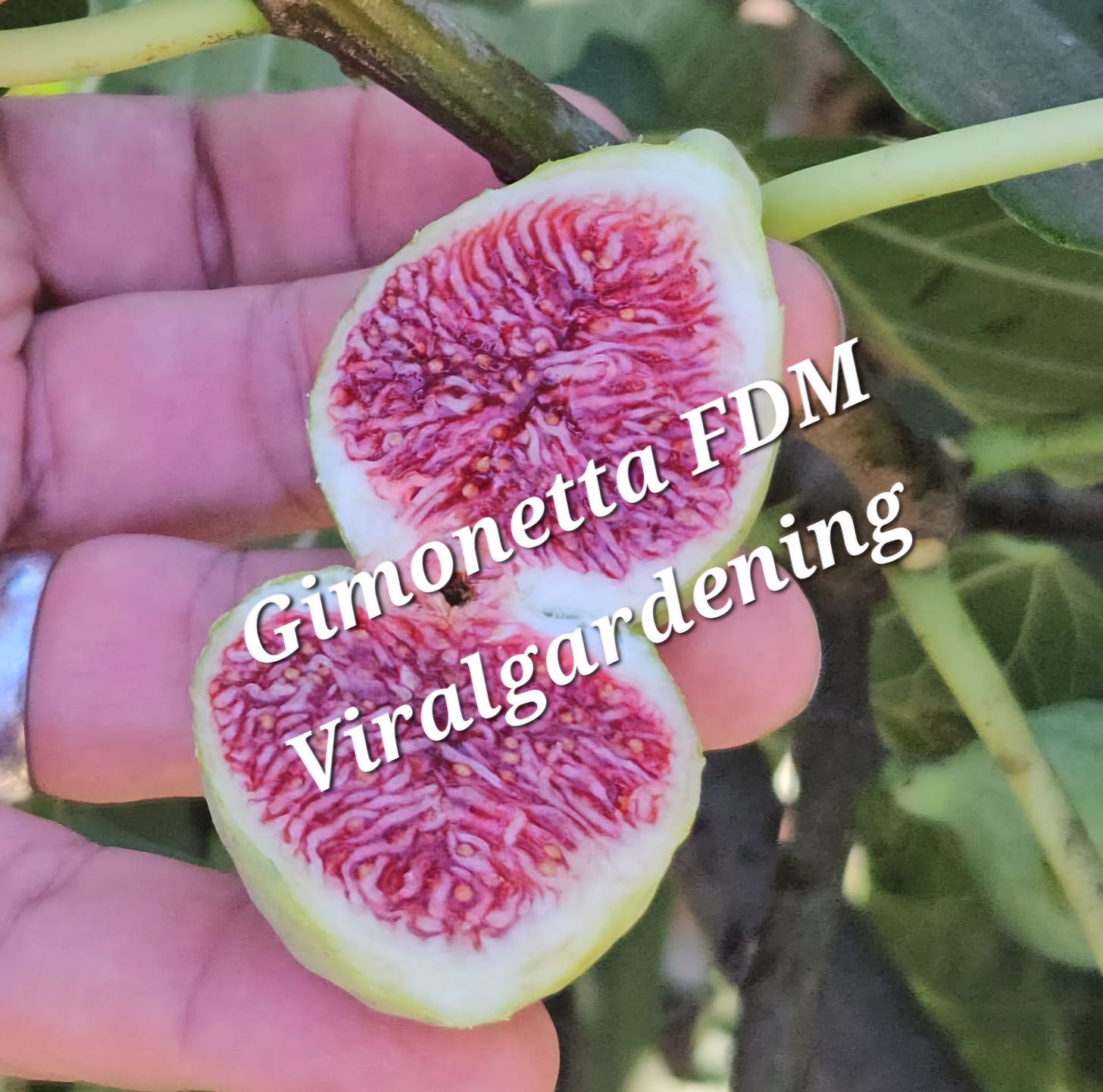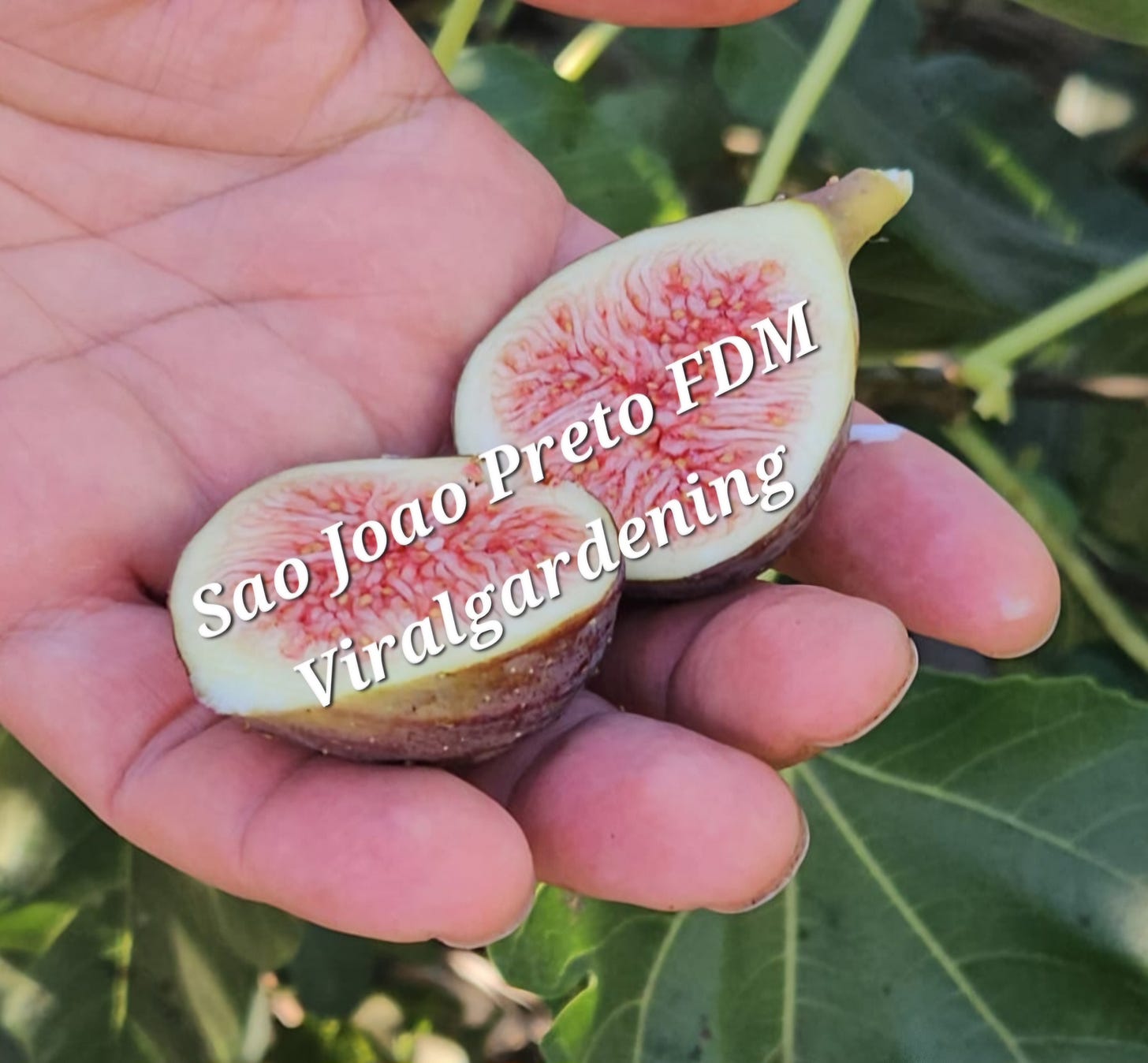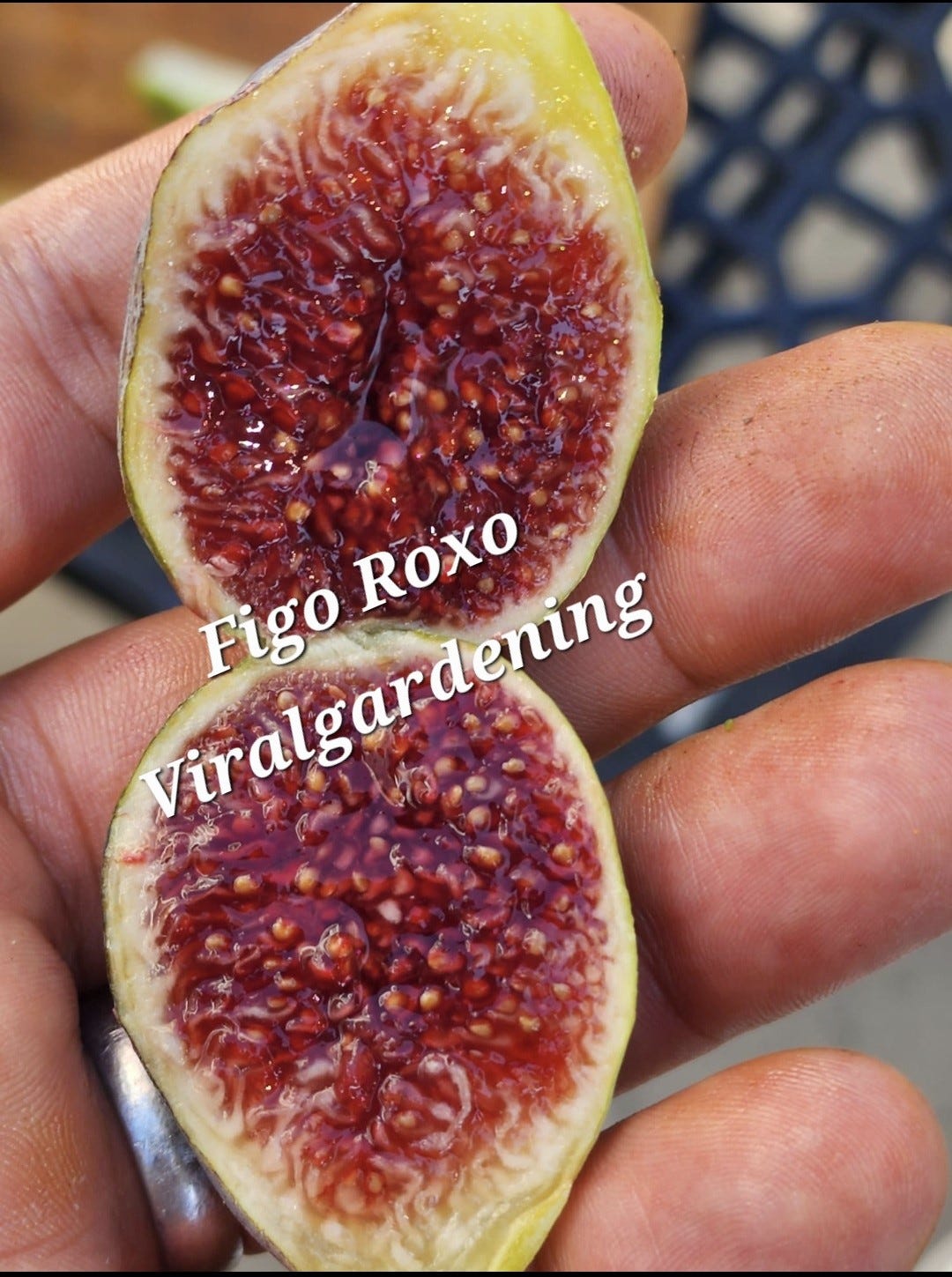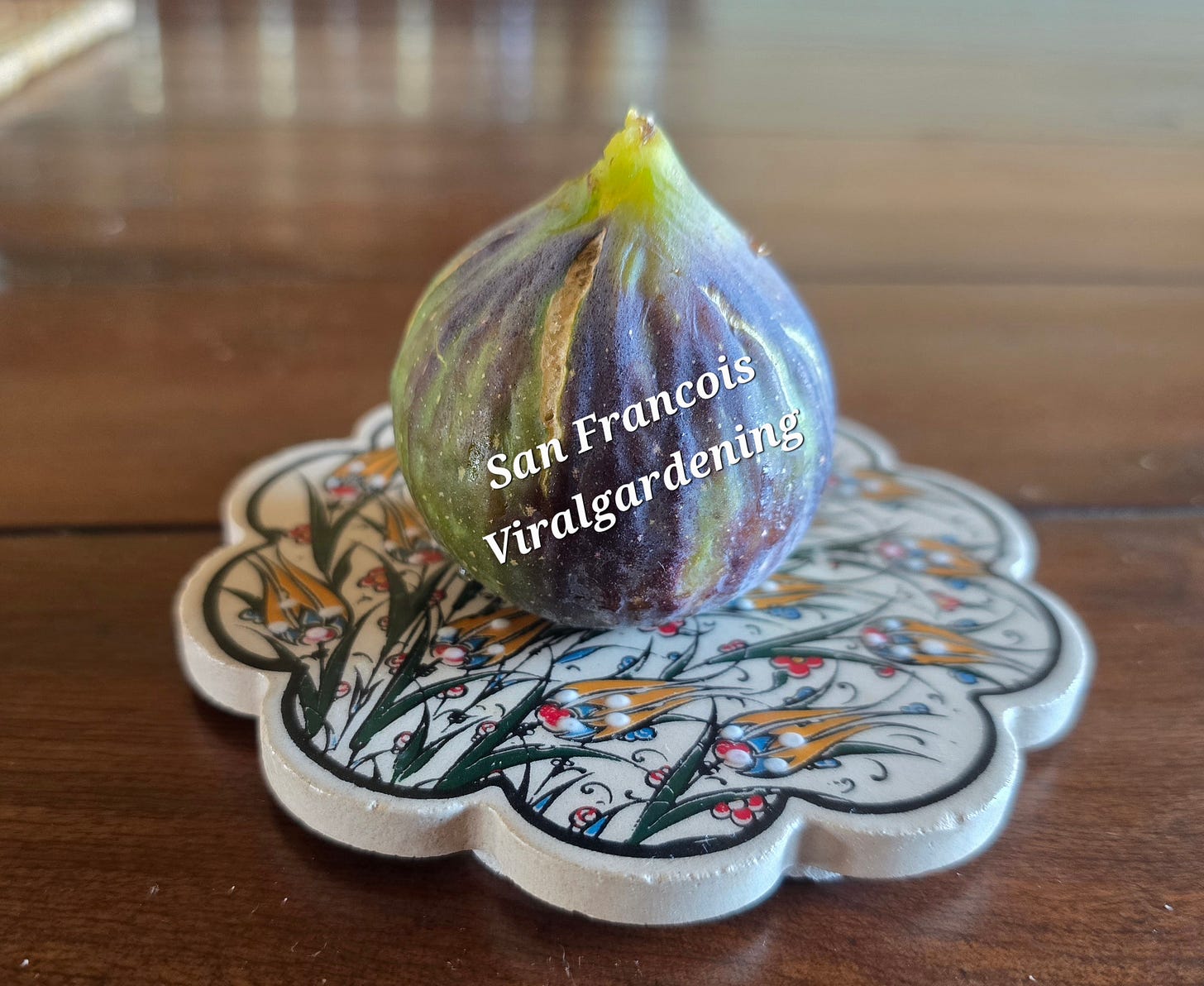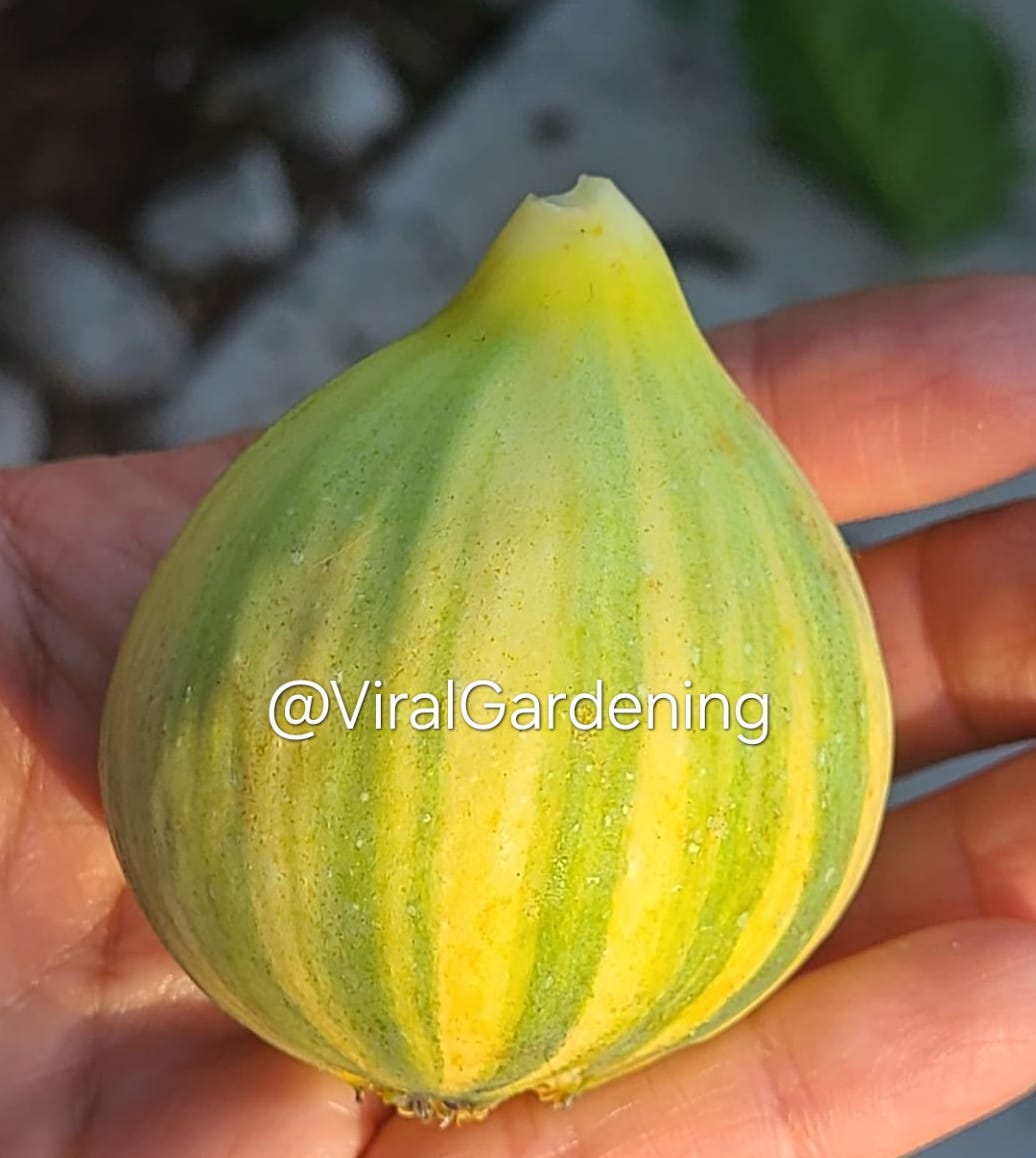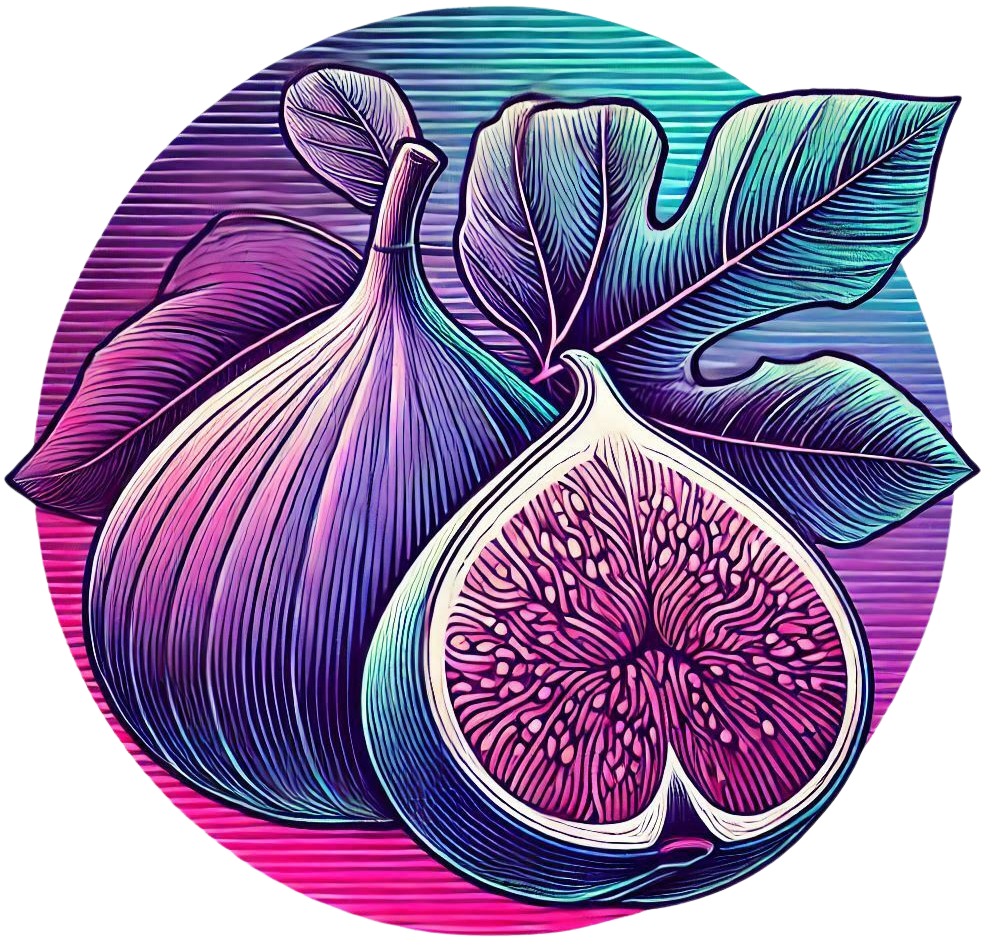Interview With A Fig Grower: Khaled Hassan
Want to increase your plant collection and need some tips managing it? Would you like to learn more about rare fig varieties? This is the interview for you
Hello ladies and gents! We are continuing our series of interviews with fig growers from around the world. Bringing you different perspectives and growing practices from my own so you can get a real taste of the fig life. I’m very honored to introduce you to Khaled Hassan. He is one of the larger collectors I know of with a passion for figs that has echoed my own. And with that, here is Khaled —
But first, to set the tone, please press play…
Location: Orange County, California. Zone 10A
It's nice to meet you all. I am Khaled, and I love growing tasty fruits. I married my high school sweetheart, who generously indulges me in my plant habit. We have 7 children, are very active in our local community, and manage just about 2,000 different plants. I am a dermatologist by trade, but we have a small private family farm and nursery.
We are big hockey fans, which occupies a lot of our free time (imagine running around after so many hockey players). I am a big reader, although as plants have taken up more and more of my free time, I have shifted to audiobooks. It seems like every year I pick up a new hobby or interest. I started collecting books and going to book signings in 2008. I picked up on plants in 2010. More recently, I taught myself irrigation, niche coffee (mainly espresso), pizza, and bread baking, and this past year, I took up learning Mandarin. I don’t know what my next project will be, but I have been thinking about either a podcast, social media presence, or writing a book, either fiction or non-fiction.
What got you into growing figs?
The first time I encountered the wonderful diversity of fruits was in the first week of college when I saw an heirloom tomato on display from one of the farm clubs. I remember being absolutely delighted (as I loved all things tomato). Fast forward a few years, and I found myself taking my kids out to the strawberry and blueberry fields in North Carolina when I was in graduate school. When we had our own place, my wife bought me a tomato plant. I kept forgetting to water it though. I’d get home tired, and late, and would walk right by the plant, forgetting to water it. It slowly dried up and died. After a wet winter, the sad little tomato plant sent out a small green shoot. All of a sudden, I had a second chance. Now I started to pay attention to the plant. When it put out its first flower, I bought another tomato plant for pollination. Then I learned I could pollinate tomatoes with a vibrating toothbrush (I soon learned that wind often releases the pollen, so no special attention is needed).
My curiosity pushed me to buy other plants. I bought strawberries, eggplant, and herbs. One day at Home Depot, I saw an avocado tree and wanted to buy one. I quickly did an internet search and read that ideally I should have 2 types of avocados, an A and a B type. When talking with an attendant, I learned about multi-grafted trees. They didn’t have multi-grafted avocados, but they did have multi-grafted citrus. That day, I left with 2 different avocado trees and my multi-grafted citrus tree. That day, my mind was overloaded with plant information, and the seed for discovering different cultivars and grafting took hold in my mind.
Over the next few years, I collected some 30+ plants. We lived in a typical Irvine home – essentially no backyard, almost exactly like the homes featured in the TV show “Arrested Development”, which pokes fun at the typical Irvine community setup. Everything I had was in pots. When we moved into a larger place, I started to expand my interests. I bought different types of stone fruit, mangos, citrus, and persimmon. By the time we moved into our current place, I had some 130 potted trees. My wife usually hand-watered all of them – God bless her for her dedication and patience in putting up with me.
As we set about planning the layout of our trees at our forever home and orchard, I realized I wanted some fig plants. I planned for 3 fig trees. I did a few days of reading about figs, settled on 5 varieties, and then pre-ordered some plants from a website online. I paid about $200 for the trees. 6 months later, the trees were never delivered, and the guy had disappeared. I went online trying to find out about this fig scammer and came across the Ourfigs forum. Apparently, this was a popular way to find the forum and learn more about figs. Then I discovered figBid and plant sales. That winter I rooted about 30 varieties. I couldn’t really choose between the varieties, so instead of planting 3 trees, I planted all 30.
I was surprised at how fast the trees grew. We planted them in April of 2017. That November, each tree was taller than I was and they had several fruits on them. My favorite that year was I-258 and Violette de Bordeaux (VdB). I had the last fruit in November of that year, and after having that last VdB, I remember thinking to myself that growing figs was pretty easy. By contrast, I had been messing around with avocados for years with hardly any fruit to show for my effort. Figs just seemed to grow on autopilot, grew fast, fruited easily, had no real disease issues, and gave tasty fruit in a short period of time. Moreover, it gave me something to do in the wintertime when there wasn’t much else for me to do with the plants.
Along the way, I made some good fig friends. Eric started posting on Ourfigs around the same time I did, and we teamed up on a couple of fig searches – we seemed to both be on the hunt for top-tier figs. My first fig buddy – everybody needs a fig buddy, someone you split everything with and keep each other going through the tough times, someone who eggs you on and keeps you motivated, someone who grows the figs slightly differently from you and who can offer a different perspective – that fig buddy was Chris. Chris had a lot of knowledge and insight and pointed me in the direction of some of the large growers. I still talk with Chris every so often, but he is not as interested in figs at this time. I have subsequently made a handful of fig buddies, many of whom have become close friends.
My first fig disaster came in February of 2019. My 6th child had just been born, and I had rooted some 200 different plants. I tried figpops – they were the new thing back then, and rooting was so easy. I would see roots and giant leaves within 1-2 weeks instead of the usual 3-6 weeks with garage rooting under lights. I was so thrilled by what I saw that I kept buying more and more. I just wanted to taste everything. When my daughter was born, I realized I needed to start moving the fig pops out of my bedroom. I put them all outside. I don’t remember how I did it the first years, but transition shock was never really an issue. In 2019 though, I killed almost everything.
Out of 200 trees that I potted up and moved outside, about 10 survived. I was in denial for the first few days, but I started to read up about what I was seeing and realized that these plants were dying. I panicked. I wasn’t sure what to do. Some of the plants I put in the shade. They kept dying. Some I removed from pots and tried to put back in figpops. Too late. The roots were dying on those. For some others, I cut off the mid-sections that still seemed alive and I practiced grafting. I didn’t have much experience with grafting, but one night I just went around and randomly cut wedges into my in-ground trees and grafted. Not too precise, the light wasn’t great, and I really had no experience with grafting, but surprisingly I was successful in just about all my grafts: Madeira Island Black, Bordissot Negra Rimada, Martinenca Rimada, Tres Num Prato, and Black Madeira UCD.
This experience saved my 2019 fig season – at least my fig morale – and it inspired me to continue to learn how to graft. Chris introduced me to some of the larger growers, and soon I was buying by the 100s. I really enjoyed getting to know the different varieties. Each plant seemed to have a personality in the way it grew and how it put out figs compared to its neighbors. Like I said, it gave me something to do in winter when there wasn’t much else to do.
My fig orchard grew to nearly 1000 different varieties pretty fast. Then I did a cutting sale. It was more of a father-son thing as I was hoping to make it a family or group project with my older boys. One son really got into it. He was making lists, learned how to read the fig map, responded to messages, and made the tallies. I even let him set prices on some of the trees. The next year, the older boys were away at school, and my wife and I did the sale on our own. It was a bigger sale, with even more varieties, but the energy and excitement weren’t the same without the kids being engaged. It became more of a chore and a job than a fun project. I tried motivating myself to do it in 2023-24 but then realized that I don’t grow plants for other people but rather for myself and my family. In terms of the orchard and farm, it was more practical to focus on just a few cultivars and sell cuttings and trees from just a few very special, unique, and rare varieties. This saved me a lot of time.
In the meantime, my interest in figs has really run the gamut. For the past few years, my fig buddy and I have been chasing down collections. The Pons collection and FDM collections are partially published, but one can find other published fig collections (in other languages). There are many fig collectors here in the States who don’t really talk about their collections, and getting to know them and their stories and the stories behind their collections has been really rewarding. Some of them have been kind enough to trust me to share their cuttings with me, and so for the past 2+ years, my focus has really been on these harder-to-find figs that I can’t really talk about much because they were given to me in confidence or I was asked not to sell or share them publicly, etc.
Along the way, I developed an allergy to fig leaves. It is a huge headache. I get itchy just walking near them with short sleeves, so in the summer I need to wear a hat, gloves, long-sleeves, and pants just so that I don’t scratch my skin off. Thankfully, I am not allergic to the fruit. My family loves the fruit, which is my ultimate reward. That is my fig story up until now.
That is quite a start! How are you keeping up with so many trees?
I currently have about 1700-1800 trees. I now grow them in 3x3 and 4x4 treepots for space. The trees from the past 3 years have to be kept small by design. I am running out of space and am looking for affordable acreage.
The original trees are all-ground, the second batch of trees are in large 15-25 gallon pots, and the 3rd wave, which is when I really expanded my collection, are all in 5-gallon pots, which I continued for the next few years. The figs from the last 3 years are in 3x3 and 4x4 treepots. I also have several varieties grafted onto either the in-ground trees or the trees in 5g pots and larger.
There’s no way we can hand water everything. The new starts and newly up-potted figs are hand-watered, but by the end of the season, they are plugged into the irrigation system.
The figs otherwise get nothing special. My goal is to get the figs up-potted by April/early May so that they can be on auto-pilot for the rest of the season, (and subsequent years,) so that I can turn my attention to the other trees during late spring, summer, and fall. I do have a fertigation tank connected to my irrigation system.
I like to root figs in either avocado/citrus mix or liner mix. I try not to mix the 2 different soil types during any given growing season so that the timing for watering is roughly the same. I have really gravitated towards the avocado/citrus mix and recently Gary’s Top Pot soil (not the acidic one – that one roots really fast but retains a lot of water). I like the mix to drain fast. I can water once a week in winter without having to really worry, and on a heat mat, I water twice a week. I used to use rooting hormone. I have hardly used it this year for some 200-250 cuttings.
I usually, but not always, scrub my cuttings depending on how they look. I do like to cut them into 3-4 inch segments, usually 2 or 3 nodes at a time. This lets me also get a glimpse of the cut wood to see how healthy the interior of the cutting is. If it’s really precious, I graft a piece of it or all of it. If it’s thick, I will do a banana graft literally 1 node at a time, but more recently I have started to favor Z grafts. They’re fast and effective. I have gotten to the point where I can do banana grafts relatively quickly as well. If it’s thin, then my go-to graft is a side graft.
I personally prefer to root for a few reasons. Firstly, because I grow the figs in large batches, rooting is just a quick and efficient way for me to do things. I clean, wrap, and label within a day or so. Then I stick them in cups, mugs, or pans of water depending on how many cuttings are in that batch. They can last for a while. I usually change the water 1-2 times weekly until I’m ready to root them, or until it looks like they have roots or swollen lenticels. Basically, the cuttings are getting primed until I have the time to root them all.
Secondly, when I root cuttings, I can then properly map out where I end up putting the plants when they are ultimately potted. That way, if I lose the label or the label gets shrugged off by the growing tree, I can still orient myself and know what it is.
When I root, I have to decide if I want to root outside in small treepots or on a heat mat under lights. If I root indoors, on a heat mat, under lights, I usually see roots between weeks 3 and 4 (using see-through plastic cups). The plants have filled their cups with roots by week 6 and are ready for up-potting by then. I transition the plants slowly 10-15 minutes of morning light the first 3 days, then I do it 20-25 minutes twice a day for the next few days, then 30-35 minutes twice a day. Once the plants handle over an hour of light twice a day, I have to decide if I slowly increase to 2 hours twice a day or leave them to handle the entire day. Our weather by this time – usually March and April – is typically overcast, so these cooler temperatures lend themselves to this outdoor transition.
If I choose an even more hands-off approach, I just root directly into 3x3 treepots, package 15-35 of them in milk crates (depending on their size), and leave them outside. They root a little more slowly, the first sets of leaves are small, but the resulting plants are hardy, don’t need to acclimate to the sun, and really don’t need much fussing (unless there is frost, snow, or hail). Finally, regardless of my rooting approach, I up-pot again sometime in May and then position the pot in its final location. Fruiting takes 1-3 years 😊
I use a dry, fast-draining mix for rooting and growing. It lets me water regularly with minimal risk of root rot. The downside is that the mix doesn’t retain much water, so the plants are more prone to drying out, especially during the high summer heat.
With the arrival of the black fig fly, I have had to spray some sort of pesticide for the past 3 years. It works really well, and I only have to spray 3-4 times in the spring-early summer. The spraying has made a big difference for us.
What are your top tips for growing figs?
Get a feel for good quality wood. I can usually tell by looking and feeling the wood if it will take or root or rot. You should get to know how good wood feels and how to evaluate it.
Learn how to root and graft single-node and 2-node cuttings. In fact, when I get a piece of wood, one of the first things I do is decide how many pieces I will chop it into. Someone once asked me why I sold some cuttings for high prices. My response was that a 10-node cutting is 6-10 trees in my hands, so I value it accordingly.
Be proactive and experiment. Experiment with single-node grafts and cuttings. Experiment with different graft techniques and rooting regimens/recipes.
Be patient with your trees. The fruit tastes better over time as the trees mature. Also, experiment with when and how to pick them. Does one variety taste better when it droops, when it cracks, when it swells? It takes time to sort out what works for you.
Pest control. Gophers killed one of my large trees. The black fig fly has also spoiled some of my figs.
Know your figs. I guess this should really be know the collector’s preferences. I don’t know them personally, but from what I can taste of the figs they tout, Dato prefers really sweet figs, Pons collects native heirloom figs, and Thierry likes photogenic figs. This way, you don’t embark on a hunt for something with unrealistic expectations.
Those are some good tips! What are your biggest joys and disappointments in growing figs?
Sense of accomplishment – I really do enjoy seeing roots develop and leaves emerge.
Sense of order – managing so many trees and unique varieties forces me to re-think how I organize things. I have tried many different smaller projects to this end, and many of them aren’t necessarily cohesive, but they keep me occupied and mentally engaged.
Sense of obligation – Many varieties that I have acquired more recently over the past few years have been shared with only a handful of people. I take the trust given to me seriously and view my efforts to grow, trial, and document these figs as a trust.
Shared joy – while my family may not feel all the things I feel with respect to the plants, they do share bits and pieces of my enthusiasm. At the very least, they enjoy the fruit, and that’s one thing that keeps me going.
Even though the data tells me to trust my process of rooting, sometimes I still feel anxious around weeks 3-4 if I don’t see roots, or when roots stall. Transitioning can also bring me some anxiety as I will position the plants in morning light and then call my wife and ask her to move them in or cover them with a pop-up. I know I am relying entirely on her and her schedule, and I don’t want to overburden her with my plant schedule. Part of the process is learning to let go. This past year, my first batch of transitioned plants for the most part all lost their leaves despite slowly transitioning them over 3 weeks. The main growth terminals survived, so the plants should bounce back. Surprisingly, the subsequent 2 batches were transitioned rapidly over the course of 1 week as we kind of forgot to move them in on time, and those plants are doing just fine. Go figure.
Insect pests are very frustrating for me. The black fig fly is frustrating but I have been able to control them by spraying pesticides every 3-4 weeks from April to early June. This can supposedly inhibit caprification, but the figs still taste good. I don’t spray when the figs approach maturity, but at that point, the usual fruit flies and small beetles can infest the ripening fruit and it’s a race to see who will get the ripening fruit first.
Lastly, every year I lose some plants, usually 3-4. I lost my Leo Poldo Abruzzo 3 years ago. That was hard because it was so difficult for me to obtain, and the friend who shared it with me subsequently got rid of his tree as he was downsizing. Every year I also seem to have some major issue with irrigation, typically during the summer. The high heat and heavy water demands seem to expose the flaws in my system. All it takes is 1 bad day to take its toll.
It requires constant attention.
How have you grown as a person while growing figs?
Working with plants has taught me to be patient. Plants, like avocados, take a few years to reach production size, and the fruit can take 12-18 months to mature. Earlier in my plant career, I may have been impatient and cut or pruned plants at a small size or forced them to fruit early when small thereby impairing their growth.
I have also learned how to be more diligent. Because of how busy I am, I find myself organizing my tasks and doing them when I have set aside enough time for them. I have learned though that when the plants need something, they may need it immediately and not when I have time for them. For my mangoes, this means I need to spray fungicide every couple of weeks in the late winter and spring. For figs, I have to spray for the black fig fly in the late spring and early summer. For avocados, I have to be on the lookout for heat waves and protect exposed bark accordingly. If I skip the task or delay it, I may lose the entire crop or in the worst-case scenario, lose a couple of growing seasons from dieback and disease. Remember, I used to grow things in pots without an irrigation system. In the high heat of summer, more than 100 plants would need to be watered sometimes more than once a day. If we skipped this task or were away on vacation, the plants would burn and die back. 1 bad day, 1 lost year.
Lastly, the plant life has given me a creative and experimental outlet. I get to continually read and learn something new, then put it into practice. I tinker all of the time. My wife likes to say it is a healthier activity than gambling or drinking, and along the way, I’ve made some great friends and had some memorable experiences.
This seems to change yearly. As I try more and more figs, I find myself appreciating more than just the first taste. I have come to appreciate different pulp textures, skin thickness and chewiness, juiciness vs sweetness. Some figs have a refreshing taste to them while others make me feel satisfyingly full. I tried one variety this past year that was so sweet, like really ripe dates, but had an almost dry internal texture like a dried fig despite being picked dead ripe. It was truly very different.
What are your favorite and least favorite varieties?
Some tried and true favorites: Bordissot Blanca-Negra, Vasilika Sika, White Algiers, Yolo Bypass, UCD Golden Riverside, TD Yellow Crinkle, San Francois, Figo Roxo, Raspberry Latte, Coll de Dama Mutante Bicolor, and Joualle Rouge. There are several others but these ones produce a lot of very tasty figs.
Some tasty ones that received rave reviews in our household over the past few years:
Crnika Palestinian 3
NV7
TNT
De Sant Antoni de Jeuny
Verte Pulpe Rouge
Some of the other NV varieties
Joualle Noire
I haven’t actually gotten rid of [the least favorites]. I just graft over them or leave them be. Some of them have gotten better over time.
Croisic – acceptable but not really worth the space.
Kadota – sometimes it is great, large, sweet, juicy, and refreshing. Other times it is bland. It seems to be inconsistent, and there are more consistent figs with similar taste profiles that are more intense in flavor.
What are you looking forward to most this next season?
My biggest efforts over the past 3 years are all related to private collections. There are some amazing fig collections out there. Some like Mario’s are becoming more popular while others remain under wraps. When I first started, I was keen to share everything and publicize them. This approach however scares away people with special items and collections. I get it. Some people have discovered something special and meaningful for them and their families. It is their special secret, and they want to keep it that way. Think about Fracazzano Multicolor and how the individual who posted photos talked about how he wants to keep enjoying it in relative obscurity. These past few years, I’ve focused a lot more on cultivating relationships and working on not publicizing everything, and this year I expect to get a chance to try fruit from some of the trees that hold special meaning to some fig folks and were shared with me. Some I can’t really talk about, but some others that I am excited about are:
-Roja del Rey Sancho: The story goes that this red fig was the Spanish King Sancho’s favorite fig. The reports that I’ve heard so far tout it as something special.
-There are a few other special figs related to Spanish royalty. I am trying to figure out how many of these royal figs are out there.
-Palestinian 3: I received this variety a few years ago as part of a giveaway on Ourfigs. The originator doesn’t know the original name of the fig, but he did subsequently identify Palestinian 1 and 2. I posted about it, but nobody seems to recall it, and the originator told me he thought it was a Smyrna and so didn’t send it to anyone else. I am not convinced it is a Smyrna and sent some cuttings to people in the northeast. This one was outstanding this past year. It stopped us in its tracks. Medium-sized, dense, full-bodied, and high in flavor. Everyone in the house loved it, and the good news is that the tree has many fruiting branches, so this should be a great year for it.
-All the different variations of Verdal, Verdolino, Verdino, Verdone, Verte, and Verde. This seems to be a generic term for green fig. I am hoping to better document the differences between these (i.e., Verdal Ibiza, Verdal, Verdolino, Verdolino del Lago de Garda, Verdino, Verdino del Mord, etc).
-Montjuic: This was a local find by a fruit hunter on Ourfigs. I am pretty sure he hasn’t published anything about it yet, so stay tuned.
-NV figs: I find these figs a really fun endeavor because they are not heirloom figs. They were discovered amongst a broad collection of figs. They don’t really have a history, and so we get to be the first group to really discuss their flavor profiles. For example, the first NV7 fig I ever tasted had a coconut aftertaste. I had never experienced that flavor profile before, and actually, I haven’t experienced it again since 😊 Looking back, I think the fig had that flavor at an early stage of ripening, and perhaps that specific flavor is lost as the fig matures and fully ripens. The tree itself also makes different types of figs – some are flask-shaped (the brebas), and the main crop figs can be both round as well as oblong. It’s fun for me and my wife to sit down and think about these different factors and work them out on our own time. Some other fig folks have talked about similar experiences – picking the figs at specific stages for desired flavor profiles.
Another like that is TD Yellow Crinkle. The first one I ever picked was a little premature mainly because a bird pecked at it as it was swelling. I didn’t want to lose the fig as there were only 2 on the branch, so I bit the bullet and ate the edible parts. It tasted great with a raspberry-type flavor. In subsequent years, I protected the figs and allowed them to fully ripen. Turns out, TDYC is a really sweet fig. It turns into a syrupy mess when it ripens, and is so sweet that any other flavor is tuned out.
-Speaking of TD Yellow Crinkle, the TD in the name stands for Tayyip Demir. It turns out he has some unique figs that he is excited about, and I hope to find and trial them. So far, I have read about a black Damir fig and a brown Damir fig.
-Similarly, I am a big fan of Vasilika Sika. I believe mine is the VS strain. Based on this single fig tree, I have been pursuing as many different Greek figs as possible. Many of the trees from this endeavor are too small still, but I am looking forward to watching them grow. It gives me something to look forward to for next year. I bought all the Greek heritage figs from Harvey and Will, and I have visited several Greek cultural sites locally and while traveling. I’ve been to Greek festivals and Greek churches. There is a large Greek community here locally, and I have obtained some heirloom varieties and named varieties from some neighbors. Speaking of churches, places of worship are great places to find unique figs and pomegranates. Some of my most flavorful finds come from the trees at Muslim mosques.
-Montfavet NOT: This came to me as Montfavet. I fruited it, and it was really unique: mid-sized fig, beautiful striations and color, unique cherry-berry taste with a pulp that was full-bodied and slightly well-formed and solid (not jammy but instead kind of like how citrus pulp is not homogeneous). Comparing it to the published photos of Montfavet, this is certainly not the true Montfavet. The person who gave it to me doesn’t know what it is either. This in and of itself was a funny exchange. He sent me a message about 6 months ago asking me for a cutting of Montfavet. I responded with something along the lines of: “What do you mean you don’t have Montfavet? My tree came from you! And by the way, I am happy to send you a cutting of what I have – it is not Montfavet, but I really liked it.”
-Gimonetta: I have been after this one for a while. I fruited it last year but will have more fruit to sample this year.
-Sao Joao Preto: Like Gimonetta, I tried a few last year and will have more to try this year. This one was a very, very, very sweet fig.
-We have put together a collection of photographs that we hope to publish on a daily basis, something along the lines of “Fruit of the Day” or “Fig of the Day.” We have so many pictures spread across a few different hard drives and cloud servers though that organizing them has become its own onerous burden. I think we have organized enough of them that we can start posting and publishing them. We were also thinking of self-publishing a coffee-table book with pictures and descriptions. The book may be a costly endeavor but it is fun to think about.
That sounds very cool and exciting! Do you think you will ever stop growing figs?
Not really stop growing them, but I think I am getting to the point where I will start getting rid of trees or grafting them to keep a variety and then toss the tree to make space. Or buy some more land somewhere.
I have, however, found my attention wandering to other plants. For the last 2 years, I have focused a lot more on my mangos, and this year I will be paying more attention to my stone fruit, Asian pears, apples, and anonas. I think it is healthy to rotate interests. It keeps things fun and exciting.
Lastly, where can people find you?
We started a YouTube account when Covid first started – Viral Gardening. We have several videos that we never published though. We keep making videos but just haven’t gone back for editing. We may just go ahead and publish them.




